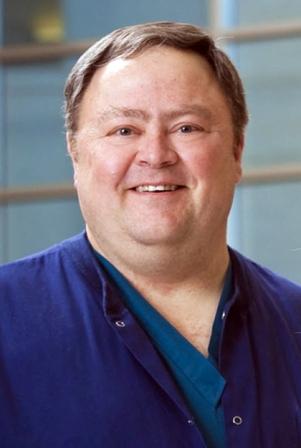At some point after having kids, many moms realize that they ended up with more than the new baby. Some women develop varicose veins after one or multiple pregnancies. Nobody likes the way they look and those who suffer with them often experience pain with the condition. So we asked an expert, Dr.  Mark McCoy (pictured right), at Mercy Medical System to tell us what can be done to treat and prevent this condition.
Mark McCoy (pictured right), at Mercy Medical System to tell us what can be done to treat and prevent this condition.
If you’re one of the lucky ones who doesn’t have this condition, be sure to read the end of this interview with Dr. McCoy to find out what you can do to prevent the development of varicose veins.
Q: Who is most at risk for developing varicose veins?
A: People most at risk are those who are on their feet a lot, often standing in one spot for long stretches at a time – teachers, cashiers, nurses, line workers, etc.
Q: Is heredity a factor?
A: It certainly can be a factor, but not always.
Q: What is the difference between varicose veins and spider veins?
A: Varicose veins are large ropy vessels seen under skin versus thin “wispy” vessels at the surface, which are considered spider veins. Both are caused by venous insufficiency, meaning the flow of blood through the veins is impaired. (An example of varicose veins is pictured at right.)
Q: Can pregnancy cause varicose veins or spider veins?
A: Yes. Women with multiple pregnancies are more susceptible to varicose as well as spider veins.
Q: What are the treatment options for varicose veins?
A: One of the easiest treatments is to elevate your feet and legs above the level of your heart. There are also surgical stockings that you can wear during the day or at night. These require having a specific “fitting” by a professional to ensure a correct fit. If this isn’t sufficient to help alleviate the problem, surgical treatment is best. In particular, venous ablation is a procedure that we use to seal closed the abnormal veins.
Q: Is treatment painful?
A: Usually treatment is very well tolerated under light sedation and local anesthetic in an office setting. The procedure lasts one hour or less.
Q: What are the treatment options for spider veins?
A: Two of the most common are sclerotherapy injections or laser therapy. Dr. John Huskins at Rogers Medical Center is available to treat patients with these vein issues.
Q: How long is the recovery time after treatment?
A: Usually no more than just a few days.
Q: How will my doctor determine whether or not I’m a good candidate for vein ablation?
A: A medical history will be done as well as a physical exam and vascular ultrasound in Mercy’s Certified Vascular Lab to help determine who is a candidate for vein ablation
Q: Is there any way to prevent the development of varicose veins?
A: Yes, there are several ways. For people who are on their feet a lot, compression stockings are a good idea. You should also try to make time throughout day to elevate your legs and regular exercise is helpful. Despite this, many people still get burdensome discomfort and tired heavy sensations in their legs even without having varicose veins or spider veins. These people also respond well to ablation – even when the veins are not visible. The signs and symptoms of varicose veins are swelling, discoloration and tired, heavy legs.

